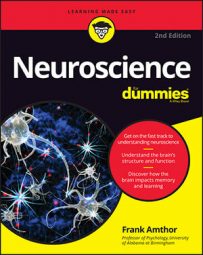Does neuroscience contain the key to extraordinary evolution? For more than a century, comic books and science-fiction have postulated the sudden acquisition of superhuman abilities from events like lightning strikes and exposure to radiation. Many of these abilities consist of sensory enhancements, such as the ability to see non-visible wavelengths, or extraordinary calculating powers. Although many scientists dismiss such possibilities as fantasy, no one really knows the limits of the human mind.
If you want to be astounded by how little scientists know about human potential, consider the well-known cases of savants, people with extraordinary abilities in a particular mental domain, such as number calculation or artistic creation, often associated with below-normal abilities in other domains. Many savants are autistic, for example. One of the most famous recent savants, Kim Peek, was the subject of the movie Rain Man, starring Dustin Hoffman. Peek’s abilities include a nearly photographic memory of more than 10,000 books and the ability to tell, for any date in history, what day of the week it was.
On the other hand, he scored very low on IQ tests and could not dress himself. Alonzo Clemons acquired, after a head injury, the ability to rapidly sculpt virtually any animal from a single glimpse. Orlando Serrell also suffered a head injury that suddenly gave him the ability to perform complex calendar calculations. Many other cases of savant abilities — both inborn and produced by head injuries — have been well documented. The skills of many of these savants are so far beyond the capabilities that humans normally exhibit that they’re hard to believe.
In other words, scientists really don’t have a good handle on what capabilities lie dormant in the human mind. Brain–computer interfaces may allow access to latent mental processing skills and enable new ones.
The most successful brain–computer interface to date is the cochlear implant for deafness. This polymer tube with 20 to 30 electrodes is introduced into the cochlea of the inner ear after deafness associated with auditory hair cell loss. Current injected by the electrodes bypasses the transduction by the missing hair cells to stimulate the auditory nerve directly, producing remarkably functional hearing. The frequencies transmitted by such implants today correspond to frequencies in the normal human hearing range, but there is no reason why they must be intrinsically limited to those bands. Ultra- or infrasonic frequencies normally not heard by humans (but heard by some animals) could just as well be coupled into the human auditory system.
A cochlear implant could also be directly linked to a cellphone so that its possessor could directly hear not only the call, but computer agents such as Siri. A chip implanted in the speech area of the motor cortex could also transmit a subvocalized verbal output to the world wide web, allowing total, silent internet access. Visual input is going to be more difficult, but there is no reason, in principle, why it won’t follow a similar path as technology advances.

